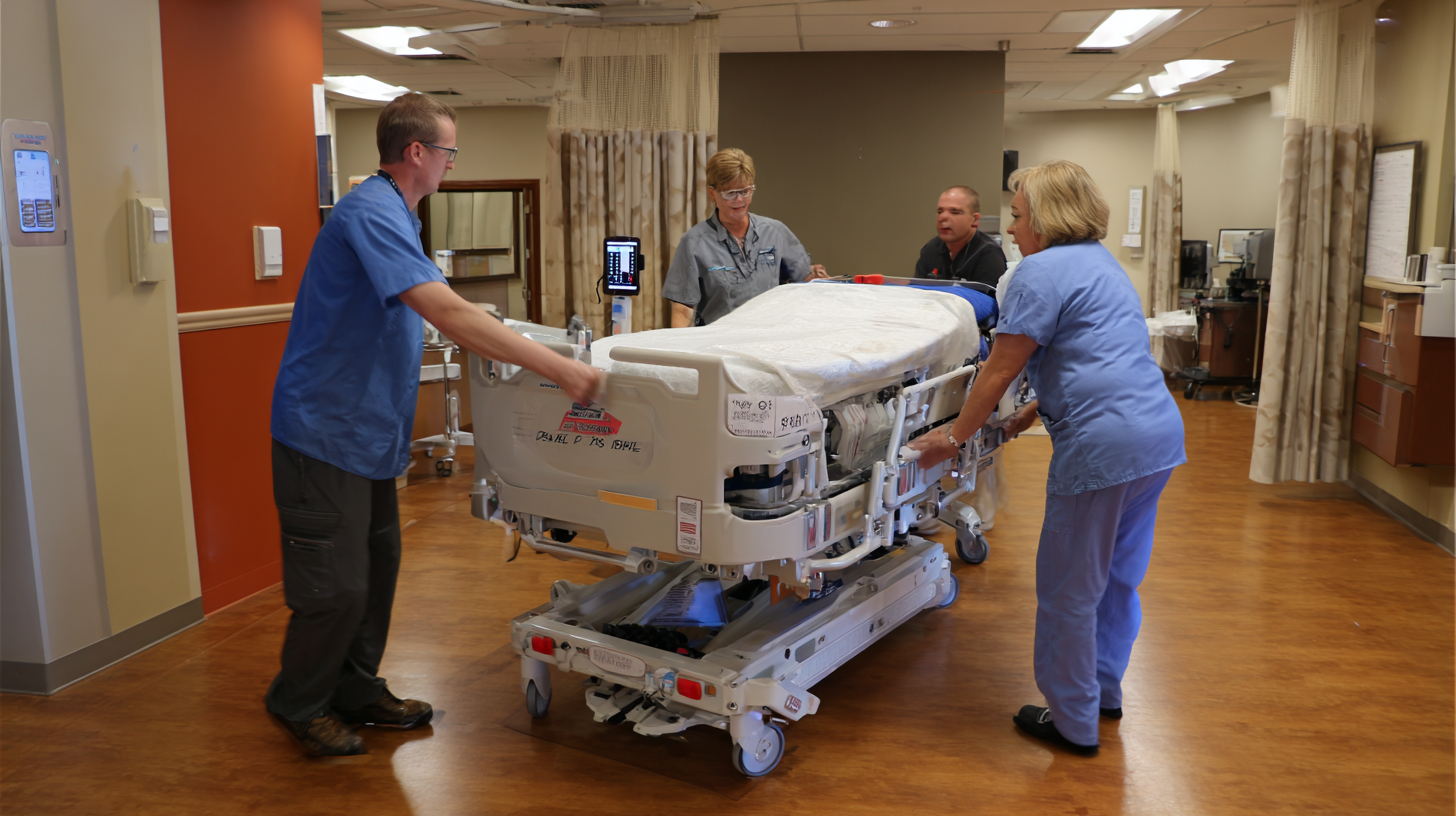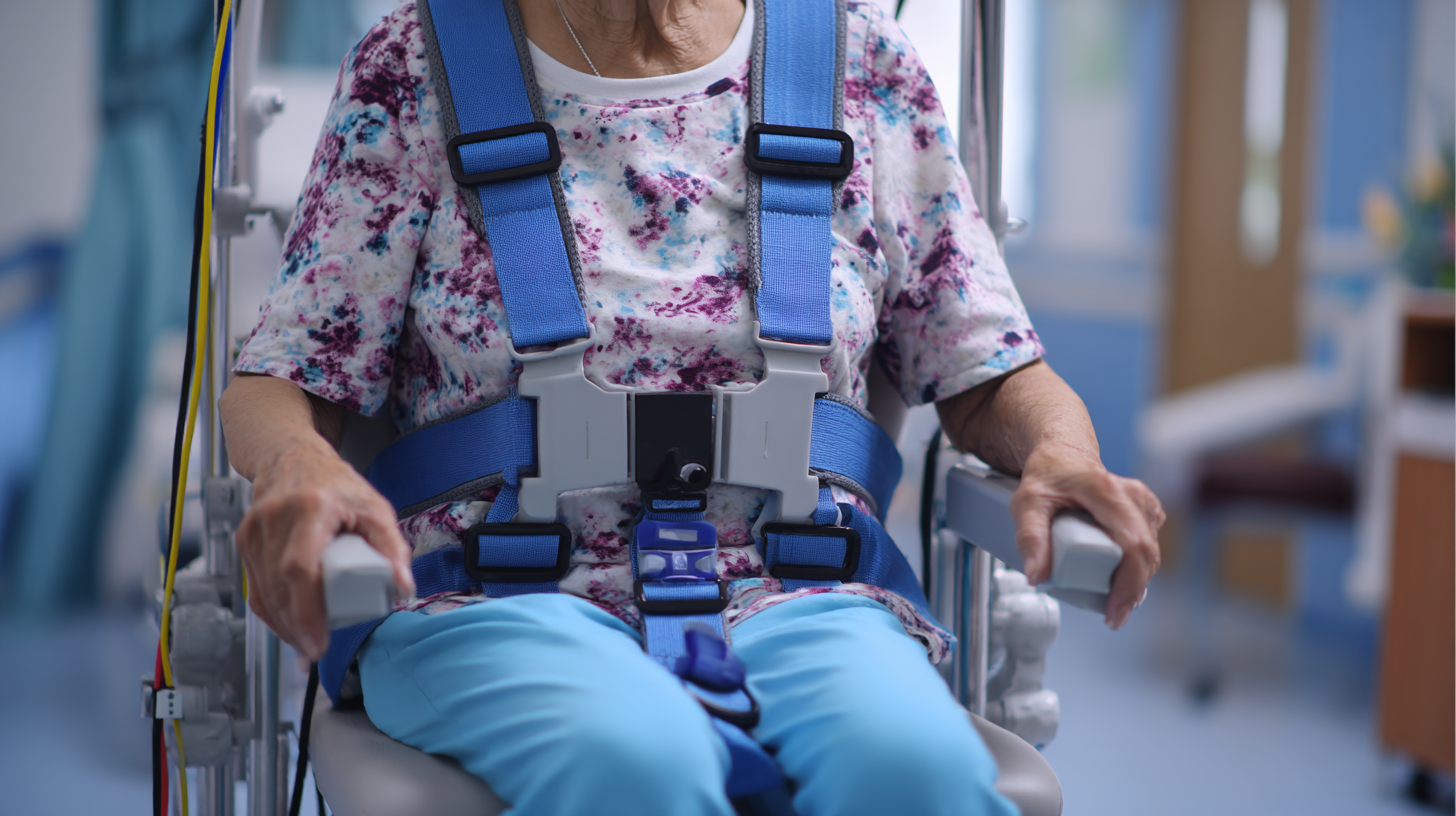How to Choose the Best Patient Lift Assist for Your Healthcare Facility
In today's healthcare landscape, ensuring the safety and comfort of patients is paramount, particularly when it comes to mobility assistance. A critical component in achieving this goal is the use of Patient Lift Assist devices, which can significantly reduce the risk of injury for both patients and caregivers. According to a report by the National Institute for Occupational Safety and Health (NIOSH), an estimated 35% of healthcare workers experience injuries from patient handling tasks, emphasizing the need for effective lifting solutions. Furthermore, the global market for patient lift systems is projected to grow at a compound annual growth rate (CAGR) of 9.3%, reaching $2.18 billion by 2028, highlighting an increasing recognition of the importance of these devices in enhancing patient care. Therefore, choosing the right Patient Lift Assist for your healthcare facility is not just a matter of convenience; it is essential for improving safety standards and operational efficiency.

Key Features to Consider in Patient Lift Assists for Healthcare Facilities
When selecting the best patient lift assist for your healthcare facility, several key features must be considered to ensure safety and comfort for both patients and caregivers. First and foremost, weight capacity is crucial. Patient lifts should cater to a range of weights, accommodating patients with varying needs. Additionally, look for models that offer adjustable sling sizes; this ensures a secure fit for all patients, which is essential to prevent slippage during transfer.

Another important feature to consider is the ease of use. Lifts with intuitive controls and smooth maneuverability can significantly reduce the physical strain on caregivers. Battery-operated lifts come highly recommended for their portability and the convenience of not needing to be plugged in during use. Furthermore, consider the lift’s stability and durability; a robust frame and quality materials not only enhance safety but also ensure longevity, making your investment worthwhile. Always prioritize features that improve the overall patient experience, such as cushioned slings and the ability to position the patient comfortably during transfers.
Understanding Different Types of Patient Lift Assists Available on the Market
When selecting a patient lift assist for your healthcare facility, it’s essential to understand the various types available on the market. There are primarily three categories: manual lifts, hydraulic lifts, and powered lifts.
 Manual lifts require caregivers to rely on their strength and technique to operate, making them suitable for lighter patients in environments where mobility is frequent.
Hydraulic lifts utilize a pumping mechanism to lift patients, providing more support with less physical effort for caregivers.
Powered lifts, on the other hand, are fully electric and can be operated with the push of a button, making them ideal for heavier patients or facilities where staff may face physical limitations.
Manual lifts require caregivers to rely on their strength and technique to operate, making them suitable for lighter patients in environments where mobility is frequent.
Hydraulic lifts utilize a pumping mechanism to lift patients, providing more support with less physical effort for caregivers.
Powered lifts, on the other hand, are fully electric and can be operated with the push of a button, making them ideal for heavier patients or facilities where staff may face physical limitations.
Tips: When choosing a patient lift assist, consider the weight capacity and dimensions to ensure it can accommodate your patient population appropriately. Additionally, evaluating the ease of use for staff can improve efficiency and safety in lifting procedures. Look for features like adjustable straps and a rotating base that promote comfort and stability during transfers.
Furthermore, factor in the lift’s portability and storage options. Some patient lifts are designed to be compact and easily transportable, allowing for versatile use throughout your facility. This is particularly important in settings with limited space, where the ability to store equipment effectively can make a significant difference in daily operations.
Evaluating the Safety and Comfort Aspects of Patient Lift Assists
When selecting a patient lift assist for your healthcare facility, safety and comfort should be your paramount concerns. A well-designed lift not only reduces the risk of injury for both patients and healthcare staff but also enhances the overall experience for everyone involved. Evaluate the lift's features, such as weight capacity and stability, to ensure that it can accommodate a variety of patients while providing a secure environment.
Tip: Always check for safety certifications and standards when choosing a lift. Devices that meet or exceed industry guidelines will offer greater reliability and reassure staff about their safety during use.
Comfort is equally essential; a lift that prioritizes gentle movements can help alleviate anxiety for patients. Look for lifts that offer padded supports and adjustable features to cater to individual needs. Additionally, the accessibility of controls can significantly impact user experience.
Tip: Involve staff and patients in the selection process. Their feedback on comfort and usability will provide valuable insights, ensuring that the chosen lift meets the real-world needs of its users.
Importance of Manufacturer Reputation in Choosing Patient Lift Assists
When selecting a patient lift assist for your healthcare facility, the reputation of the manufacturer plays a crucial role in ensuring the safety and reliability of the equipment. A reputable manufacturer is often synonymous with quality and innovation, as they tend to invest in research and development to create products that meet the evolving needs of healthcare environments. Facilities should look for manufacturers with established histories, positive customer reviews, and compliance with industry standards to ensure that the lift assists they choose can withstand the rigors of daily use.
Moreover, a manufacturer's reputation extends to the quality of their customer service and support. Facilities need to ensure they have access to comprehensive training, prompt technical assistance, and a solid warranty on their equipment. This support is essential for training staff to use the lifts correctly, thereby minimizing risk and enhancing patient safety. By prioritizing manufacturers with a strong reputation, healthcare facilities can make informed choices that lead to better outcomes for both patients and healthcare providers.
How to Choose the Best Patient Lift Assist for Your Healthcare Facility - Importance of Manufacturer Reputation in Choosing Patient Lift Assists
| Lift Type | Weight Capacity | Patient Size | Power Source | Manufacturer Reputation | Warranty Period |
|---|---|---|---|---|---|
| Electric Stand Lift | 600 lbs | Medium to Large | Battery Operated | High | 3 Years |
| Manual Sling Lift | 400 lbs | Small to Medium | N/A | Moderate | 2 Years |
| Portable Floor Lift | 500 lbs | All Sizes | Electric | High | 5 Years |
| Overhead Lift System | 1000 lbs | Large | Electric | Very High | 7 Years |
Cost-Effectiveness: Balancing Quality and Budget for Patient Lift Solutions
When selecting a patient lift assist, cost-effectiveness is a critical factor that healthcare facilities must consider. According to a report from the Healthcare Cost and Utilization Project, lifting injuries represent a significant percentage of worker compensation claims in healthcare, costing approximately $20 billion annually. Investing in high-quality patient lift solutions not only enhances patient safety and comfort but also reduces long-term costs related to staff injuries and equipment failures.
Balancing quality with budget is essential. A study by the American Nursing Association revealed that facilities using advanced patient lift systems reported a 30% reduction in staff injuries related to patient handling. While initial costs may seem daunting, the return on investment becomes clear when factoring in reduced injury costs, lower equipment maintenance, and improved staff retention rates. Facilities should thoroughly evaluate options based on both upfront expenditure and potential savings over time, ensuring that the chosen solution meets their operational needs while safeguarding their financial stability.
